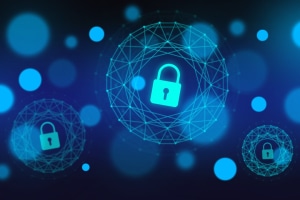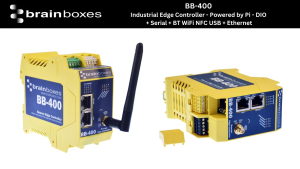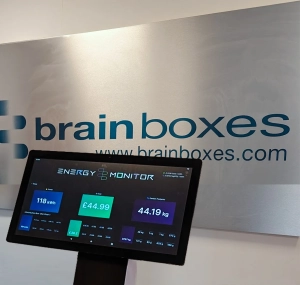Enabling Affordable Digital Transformation In Plant Operations

Written by Matt Wopata
Bringing computing intelligence to the edge of an OT network unlocks new waves of advanced automation capabilities, from predictive maintenance that anticipates equipment needs to intelligent robotics that self-operate (think automated guided vehicles, for example).
According to MIT Technology Review, 27% of manufacturing plants have edge computing in production today, with another 56% prepared to kick off pilot projects in the next two years.
Bringing Edge Computing to Automation Infrastructure with OpEdge
To process large volumes of operational data in today’s connected industrial environments, Hirschmann OpEdge-8D brings edge computing capabilities to automation infrastructure.
Acting as a robust industrial edge gateway, it allows mission-critical applications to run at the network edge, enabling plants to quickly transform their heaps of local data into useful insights and actions. When integrated with Belden Horizon™ Console Edge Orchestration, cloud-hosted device management, application orchestration and secure remote access functionality are all possible.
Designed to complement OT spaces, the OpEdge-8D platform is easy to use and install, supports application deployment in a few different ways and can be used with many systems and applications.
How Belden and Inductive Automation Work Together
To help industrial environments take full advantage of what digital transformation has to offer, Belden partners with industry players, such as Inductive Automation, a provider of industrial automation software, to provide solutions that help industrial environments fulfill their Industry 4.0 journey.
Inductive Automation’s Ignition software removes the technological and economic obstacles associated with bridging production and IT so plants can turn great ideas into reality quickly. It enables the creation of virtually all kinds of industrial applications, including SCADA, IIoT, MES (machine execution systems) and more—all on one platform.
Uniting Ignition and Hirschmann’s OpEdge family makes affordable digital transformation and edge computing possible for industrial operations in three ways.
1. Faster Time to Value
The Belden Horizon Console streamlines the onboarding, configuration and maintenance of OT gateways, end devices (e.g., PLCs and I/O) and edge applications through three main services:
- Belden Horizon Device Manager allows users to seamlessly onboard and configure Belden and ProSoft edge gateways.
- Belden Horizon Edge Orchestration allows users to seamlessly deploy and manage edge applications (e.g., Ignition containers) on fleets of Hirschmann OpEdge hardware.
- Belden Horizon Secure Remote Access (SRA) allows users to remotely access and configure both the OT end device connected to the Hirschmann gateways (e.g., PLCs and I/O) and the edge applications running on the gateways (e.g., accessing an Ignition instance running on an OpEdge).
2. Lower Maintenance Costs
The Belden Horizon Console helps users reduce two types of maintenance costs associated with IIoT deployments:
- Troubleshooting time associated with OT end devices can be reduced by leveraging Belden Horizon Console’s SRA software, which empowers technicians to remotely connect to OT assets and applications and eliminates the need to travel onsite. The Belden Horizon Console also supports remote packet captures, allowing network engineers to diagnose pesky network-related issues.
- Fleet management costs associated with updating OT devices and edge applications can be reduced thanks to the Belden Horizon Console’s ability to provide secure remote access to OT devices and edge applications (like Ignition) and update multiple Hirschmann OpEdge systems simultaneously.
3. Certified Performance
OpEdge-8D is one of the industry’s first certified Ignition edge devices. The certification is granted by Inductive Automation to devices that are fully compatible with Ignition Edge software and are ready to be pre-imaged with it.
This gives you the confidence to launch Ignition software and easily and affordably expand your system to capture, process and visualize large volumes of critical operational data at the edge.
Explore Our Ecosystem Partnerships
We partner with industry experts to connect you with the products and solutions you need—all in one place—to streamline project complexity while maximizing business value and agility for digital transformation.
Find the original article here





 Wherever you are on your digital transformation journey, data visualisation makes it easy to optimise operations.
Wherever you are on your digital transformation journey, data visualisation makes it easy to optimise operations.


